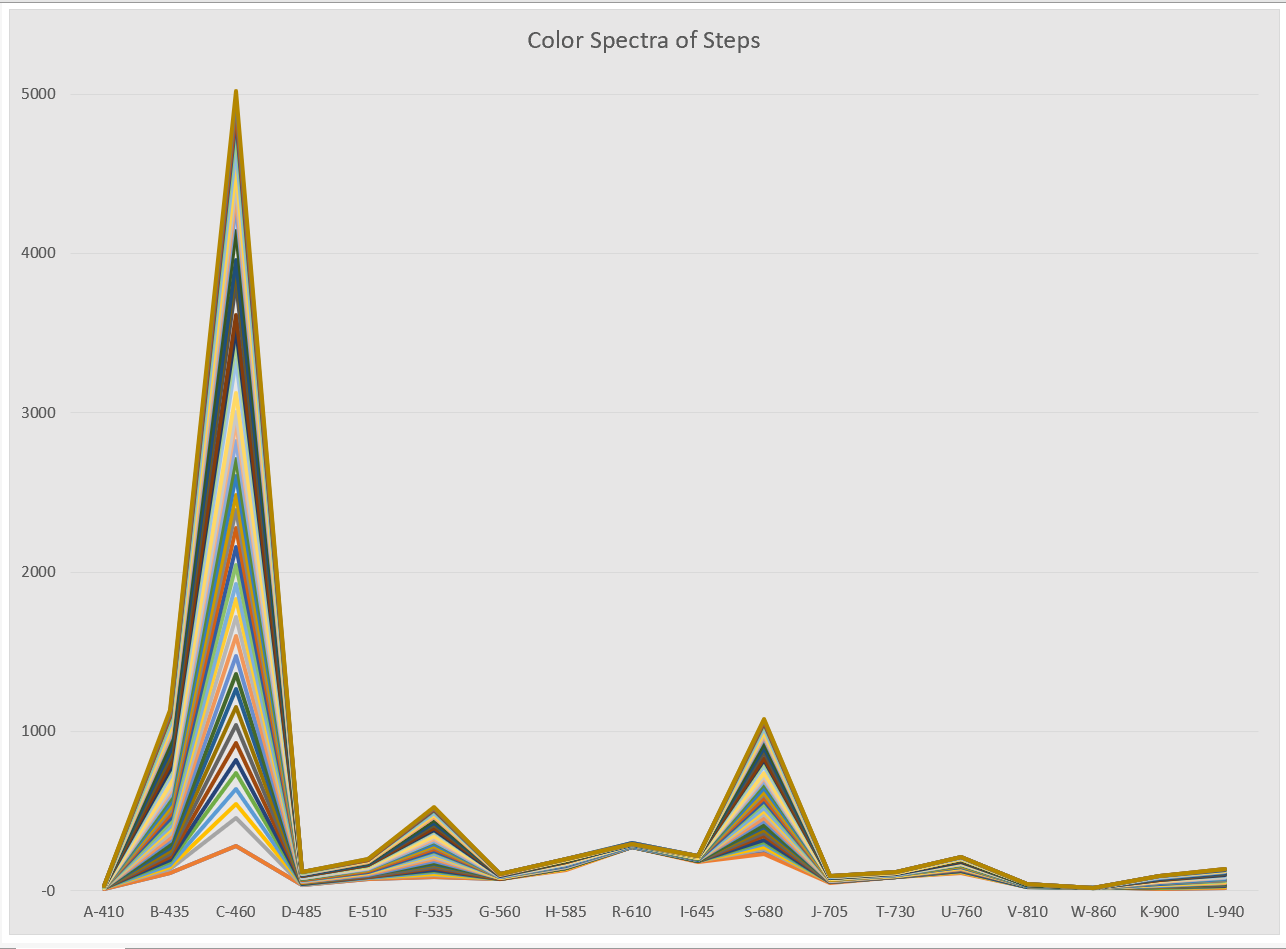One of our key goals for success has been met: we were able to manipulate color temperature output while holding light output steady in a two channel configuration. What you're able to see below is the EcoSmart Soft White and EcoSmart Daylight smoothly stepping between 46 color temperature values without changing the light output level. Views were recorded both from external to the lamps as well as directly in front of them. When watching the lamps the changes in brightness of the individual lamps are subtle in part because the camera isn't having to adjust for overall changes in brightness.
| The view from outside where the door and colorful boxes can provide some reference as to the color temperature changes. | The view from directly in front of the lamps where the changes in individual lamp brightness are visible, but overall output is stable. |
The changes being stepped through above represent steps of as little as 50K in a range from 2700K up to 5000K. The light output variation in each step was limited to no more than a 10 lumens in any given step, with even lower recorded values for most (in terms as recording the typical difference if any was no more than 1-2 lux at a measured distance of approximately 2 feet). The most obvious place to see the shift is actually using the spectrometer, which really highlighted what is happening as the output is kept fixed.
 |
| The graph charts the recorded color spectrum of the ambient light for each step of the controlled light output program. The labeled light wavelengths at the bottom represent blue on the left (410 nm) moving through green (535 nm) and red (680 nm) and beyond into the infrared. |
The warmest source setting, with light only coming from the EcoSmart 2700 K Soft White lamp, represents the bottom line. Each successive step significantly increases the contribution of the blue component of the spectrum which validates an increasingly cool spectrum. Also note how the spectrum is composed primarily of three primary peaks of blue, green, and red.
Although the lighting output is controlling only the power levels provided to each of the two LED lamps, their constant color temperature outputs and likely comparable phosphors and control electronics mean that this controller is effectively controlling each of the primary color channels with some granularity. The balance of color components would be slightly different for LED lamp manufacturer and color type selected, but should generally hold true (assuming it is color temperature stable across its power range) that manipulating power input acts almost as a proxy for controlling the individual color components of the light.
 Jon
Jon
Discussions
Become a Hackaday.io Member
Create an account to leave a comment. Already have an account? Log In.